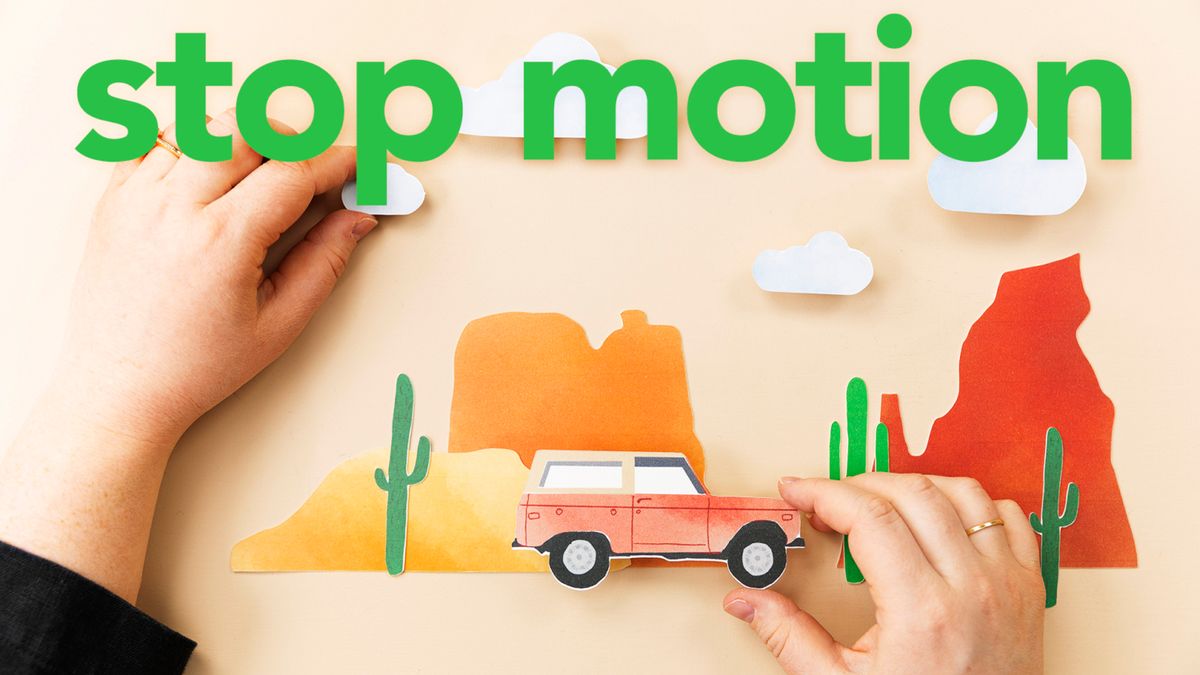Jay P and Trisha demonstrate Stop Motion Photography and the different frame rates you can choose and how they compare. They show how the different frame rates influence the look of your stop motion video.

Hi, this is Jay P. Morgan and today I have Trisha back with us. Trisha has done great stop motion for The Slanted Lens. We have a great download about how to do Stop Motion. Today we’re going to take a look today at frame rate and what that means in stop motion.
We’re going to start by taking our first frame. If I was doing 10 frames per second, we’d animate it in bigger chunks. Since we’re doing 24 frames per second, we’re going to actually move the car in tiny increments.
So when people ask the question, “What software are you using?, what are you using?
Dragon frame is the software that we’re using to shoot this animation, it takes the image from the camera and moves it over to the computer so we can see really big what it is we’re filming. And it gives you a ghost of the last frame. See, I can see it on the computer right now.
So what I like to do when I am creating a scene, that is paper, I like to give it some depth. So I really like to use these wooden blocks. And with double stick tape, I will just tape them to the piece of paper.
And that way, this is kind of like a sturdy singular piece that I can move and I don’t have to worry about the blocks falling off or having to move the block and then move the car. But actually just moves this as one whole piece.
Keep in mind we intended for this one to be shown at 24 frames per second. But this is just the same piece of footage at these variable frame rates.
I think the 10,12 or 15 frames per second looks fabulous. It just is really a current look right now for stop motion. And people like that kind of fun and bouncy look. And it just feels like stop motion. Yeah, we’re seeing right now. I really love the 12 frames per second. It’s just this really nice, kind of like look and feel that it gives the car and then here’s the our 10 frames per second sped up to 12. 10 is a little quick, the 12 is nice.
So what I’ve learned about frame rate from this is, 1. You kind of need to have a frame rate in mind as you animate. Because you’re going to move your vehicle or your objects differently depending on how quickly you want something to be accomplished. 2. A shorter frame rate seems a little more like a current look for stop motion. A little more bumpy is a word we keep using but it’s bouncy. It’s a little more fun and not trying to be cinematic. You know, less smooth but more jovial.
I think there is a lot of levity in the kind of media we consume right now. A lot of times when we go on different social media platforms, we’re just kind of looking for something that’s fun and brief.
I really like the shorter frame rate. What I think is really important though is that if you’re going to do an animation, maybe take some time to overshoot what you need, and then you can take frames out.
So Tricia has a great download over at TheSlantedLens.com. Click on online courses and you’ll see her complete stop motion download there. Trisha teaches you all the things you need to know to be able to do stop motion.
Keep those cameras rollin’ and keep on clickin’.

